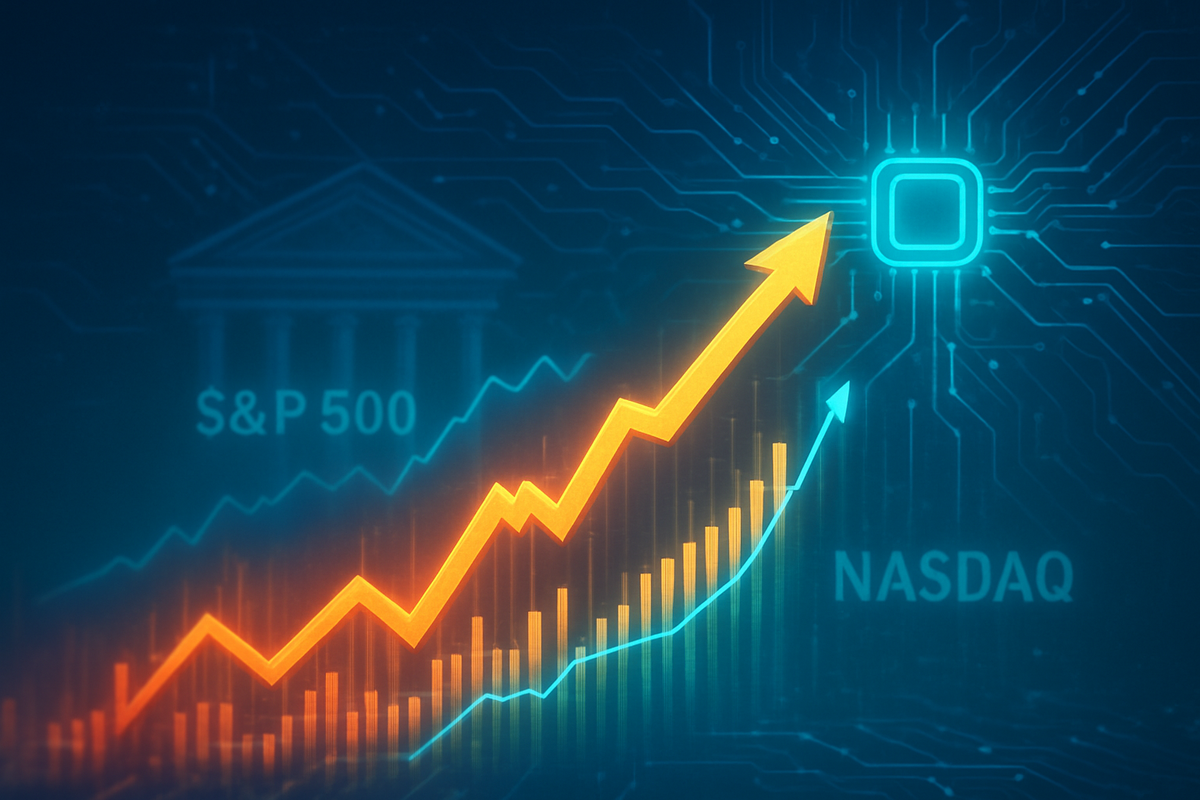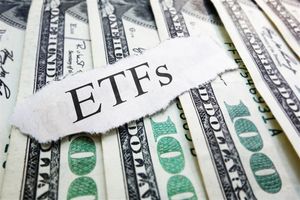
As October 29, 2025, draws to a close, the financial markets are abuzz with a potent combination of record-breaking stock performance, the highly anticipated outcome of a Federal Reserve policy meeting, and the unprecedented ascent of Nvidia (NASDAQ: NVDA) to a staggering $5 trillion valuation. This confluence of events paints a picture of robust investor confidence, particularly in the burgeoning artificial intelligence (AI) sector, yet it also casts a shadow of caution regarding potential market overheating and the delicate balance of monetary policy.
The current market environment is a testament to strong corporate earnings, an optimistic outlook on global trade, and the transformative power of AI. While the bullish sentiment is palpable, the market's trajectory is deeply intertwined with the Federal Reserve's stance on interest rates, which could either sustain the rally or introduce a period of recalibration. Investors are navigating a landscape where technological innovation drives immense wealth creation, while macroeconomic factors like inflation and employment continue to dictate the broader economic rhythm.
A Historic Rally Amidst Economic Crossroads
The U.S. stock market has recently etched its name into the history books, with major indices closing at or reaching new all-time highs. On October 28, 2025, the Dow Jones Industrial Average (DJIA), S&P 500, Nasdaq Composite, and Russell 2000 all simultaneously achieved record closes, a rare feat signifying widespread market strength. This momentum carried into October 29, with all three major indices continuing their upward trajectory during intraday trading. The Dow Jones Industrial Average surpassed 47,500, climbing to 48,040 points, while the S&P 500 reached 6,915 points, and the Nasdaq Composite soared to 24,019 points, marking its 35th record close of the year.
This impressive rally has been building throughout 2025, underpinned by a narrative of resilient corporate earnings and significant technological advancements, particularly in AI. A key factor influencing this period has been the Federal Reserve's monetary policy. The market is currently fixated on the Federal Open Market Committee (FOMC) meeting concluding today, October 29, 2025. Traders widely anticipate another 25-basis-point interest rate cut, which would bring the federal funds rate to a target range of 3.75%-4.00%. This follows an initial rate cut in September 2025, the first since President Donald Trump took office. Bond futures markets are pricing in a nearly certain chance of this October cut and high probability of another in December.
The Fed's dovish pivot is influenced by several economic indicators. The Consumer Price Index (CPI) for September 2025 showed a cooler-than-expected year-over-year inflation rate of 3%, with core inflation also easing. While real GDP grew at a robust 3.8% in Q3, the labor market has shown signs of softening. Preliminary ADP data indicated a modest increase of only 14,250 jobs in the four weeks ending October 11, 2025, and Fed Chair Jerome Powell acknowledged a "less dynamic and somewhat softer labor market" in September. However, the ongoing government shutdown has led to a "data blackout," delaying crucial economic releases and complicating the Fed's assessment of the full economic picture.
The AI Titans and Market Dynamics
The current market rally is heavily concentrated in the technology sector, with companies at the forefront of the AI revolution reaping unprecedented rewards. Foremost among these is Nvidia (NASDAQ: NVDA), which on October 29, 2025, achieved the monumental feat of becoming the first publicly listed company to reach a $5 trillion market capitalization. Its shares have surged an astounding 51% this year alone, building on a nearly twelve-fold increase since the launch of ChatGPT in 2022. Nvidia's dominance stems from its graphics processing units (GPUs), which are indispensable for powering AI applications and data centers, giving the company an estimated 75% to 90% market share in the AI chip market. Recent strategic moves, including $500 billion in AI chip orders, plans to build seven supercomputers for the U.S. government, and significant partnerships with AI leaders like OpenAI and Palantir (NYSE: PLTR), further solidify its position.
Other "Magnificent Seven" tech giants are also significant beneficiaries. Microsoft (NASDAQ: MSFT) and Apple (NASDAQ: AAPL) both surpassed $4 trillion in market capitalization in October 2025, illustrating the broader capital flow into established tech leaders with strong AI integration strategies. These companies are poised to win as AI becomes more pervasive, driving demand for their software, cloud services, and hardware. Companies involved in the AI supply chain, from specialized chip manufacturers to data center operators and AI software developers, are also seeing increased investment and growth opportunities.
Conversely, companies that might face challenges or relatively lose out in this environment include those heavily reliant on traditional business models or those with high debt loads sensitive to interest rate fluctuations, even if rates are falling. While lower rates generally benefit all companies by reducing borrowing costs, the immense capital concentration in AI and large-cap tech could draw investment away from other sectors. Traditional industries, or companies struggling to integrate AI into their operations, might find themselves trailing in terms of market valuation and investor interest. The market's focus on growth at any cost in the AI sector could also expose companies with weaker fundamentals if the "AI bubble" concerns voiced by some, including officials at the Bank of England, prove valid.
Broader Implications and Historical Echoes
This period of record-breaking markets and unprecedented tech valuations fits squarely within broader industry trends emphasizing technological innovation, particularly the AI revolution. The rapid advancements in AI are not just creating new products and services but are fundamentally reshaping entire industries, from healthcare and finance to manufacturing and logistics. This transformative power is attracting massive investment, creating a self-reinforcing cycle of innovation and capital infusion. The ripple effects are profound, impacting supply chains for advanced semiconductors, driving demand for energy-efficient data centers, and intensifying the race for AI talent.
Regulatory bodies are also taking notice. The sheer size and influence of companies like Nvidia, Microsoft, and Apple raise questions about potential antitrust scrutiny, particularly as their market caps dwarf those of entire national economies. The US-China tech rivalry, especially concerning advanced semiconductors and AI capabilities, remains a significant geopolitical factor, potentially leading to further trade restrictions and supply chain reconfigurations.
Historically, periods of rapid technological advancement and speculative investment have often led to market bubbles. Comparisons to the dot-com bubble of the late 1990s are inevitable, with some analysts cautioning that the current "AI frenzy" could lead to similar corrections. However, proponents argue that today's AI technology is far more fundamental and pervasive than the internet technology of two decades ago, with tangible applications and revenue streams already materializing. The challenge lies in distinguishing sustainable growth from speculative excess.
Navigating the Path Ahead
Looking ahead, the financial markets face a dynamic period characterized by both significant opportunities and potential pitfalls. In the short term, the Federal Reserve's decision on October 29, 2025, and its forward guidance will be paramount. While a 25-basis-point cut is widely expected, any deviation or unexpected hawkish commentary could trigger market volatility. Anticipation for a further rate cut in December will also heavily influence investor sentiment. Beyond monetary policy, the upcoming Q3 and Q4 earnings reports will provide crucial insights into corporate health and the continued impact of AI investments.
In the long term, analysts anticipate more subdued gains and increased choppiness in late 2025, followed by a robust rebound and stronger growth in 2026. Corporate earnings growth is projected to accelerate significantly, with double-digit growth (12-13%) expected for 2025-2026, which should fuel further market appreciation. Forecasts for the S&P 500 by year-end 2026 range from 6,900 by Goldman Sachs to 7,500 by Federated Hermes, with some analytical predictions even reaching 8,000 or nearly 11,000. The Federal Reserve is also expected to continue with additional rate cuts in 2026, aiming to bring the federal-funds rate to a target range of 2.25%-2.50% by the end of 2027. However, a "critical dot plot disparity" exists, where the market is pricing in more aggressive cuts than the Fed's own cautious long-term projections, potentially leading to market disappointment if the Fed remains more conservative.
Potential strategic pivots for companies will include continued aggressive investment in AI research and development, securing supply chains for critical components, and adapting business models to leverage AI efficiencies. Market opportunities will emerge in specialized AI applications, sustainable computing solutions, and cybersecurity. Challenges include managing the rapid pace of technological change, navigating regulatory landscapes, and mitigating geopolitical risks. Investors should prepare for scenarios ranging from sustained AI-driven growth to potential market corrections if valuations become detached from fundamentals or if macroeconomic conditions deteriorate.
The AI Era: A New Chapter in Market History
In summary, the current financial market landscape is defined by the incredible surge of the stock market to new records, driven largely by the transformative power of artificial intelligence and the monumental rise of companies like Nvidia. The Federal Reserve's anticipated interest rate cuts are providing a supportive monetary backdrop, aiming to foster economic growth amidst a softening labor market and easing inflation. This interplay creates a dynamic environment where technological innovation and monetary policy are the primary architects of market sentiment.
Moving forward, the market is poised for continued evolution. While the bullish momentum, particularly in tech, is strong, investors must remain vigilant. The sustainability of AI-driven valuations, the Federal Reserve's precise path for future rate cuts, and the broader economic health will be critical determinants. The "AI bubble" debate, coupled with geopolitical tensions and the ongoing challenge of inflation, underscores the need for a balanced and informed investment approach.
Investors should closely watch the Federal Reserve's communications for clues on future monetary policy, monitor corporate earnings reports for signs of sustained growth, and pay attention to inflation data and employment figures. The long-term impact of AI is undeniable, promising to reshape industries and economies. However, navigating this new era successfully will require careful consideration of both the immense opportunities and the inherent risks that accompany such profound technological and financial shifts.
This content is intended for informational purposes only and is not financial advice





